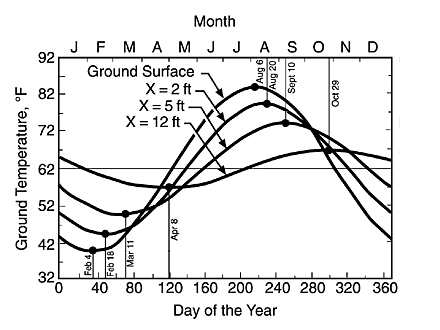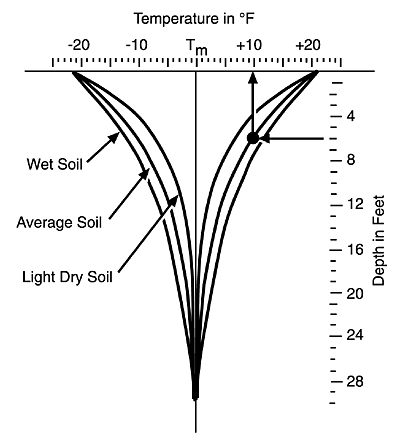
 |
|
|
#111 | |
|
Supreme EcoRenovator
Join Date: Mar 2009
Location: Portland, OR
Posts: 4,004
Thanks: 303
Thanked 723 Times in 534 Posts
|
Quote:
Good move, you'll need it later. -AC
__________________
I'm not an HVAC technician. In fact, I'm barely even a hacker... |
|
|
|

|
|
|
#112 |
|
Administrator
Join Date: Aug 2008
Location: Germantown, WI
Posts: 5,525
Thanks: 1,162
Thanked 374 Times in 305 Posts
|
Very nice Randen!
__________________
Current project - To view links or images in signatures your post count must be 0 or greater. You currently have 0 posts. To view links or images in signatures your post count must be 0 or greater. You currently have 0 posts. & To view links or images in signatures your post count must be 0 or greater. You currently have 0 posts. |
|
|

|
|
|
#113 |
|
FNG
Join Date: Jul 2015
Location: Washington
Posts: 71
Thanks: 8
Thanked 19 Times in 13 Posts
|
Nice work on this project. Of course, I can see the machinist in the custom fabricated components and workmanship in your photos. Very cool!
I came here with some ideas and a solid plan, already committed to building my own ground water heat pump system in the 3 to 5 ton range. I searched high and low across the 'net' looking for others who have tried and succeeded or tried and failed. Nice to see I'm not "alone and unafraid". AC_Hacker, your comment is the embodiment of the perfect attitude for the kind of people who are successful in this arena and more importantly the scientific method. Ears & eyes open, mind open, try and try again. |
|
|

|
| The Following User Says Thank You to TechShop For This Useful Post: | AC_Hacker (07-07-15) |
|
|
#114 |
|
Uber EcoRenovator
Join Date: Apr 2011
Location: Strathroy Ontario Canada
Posts: 657
Thanks: 9
Thanked 191 Times in 129 Posts
|
Techshop
If you have some components all ready or can find them extremely cheap you may be able to build one cheap. But I had seen some quite reasonably priced heat-pumps on E-bay. Already properly sized and tested. Yes you can build your own and yes it will work just fine but it may take some experimentation. One consideration for you if your thinking of the ultimate heated floor, Mikesolar and myself had been thinking a direct DX may be possible for heating real inexpensively. Randen |
|
|

|
|
|
#115 | |
|
FNG
Join Date: Jul 2015
Location: Washington
Posts: 71
Thanks: 8
Thanked 19 Times in 13 Posts
|
Randen, Thanks for the sound suggestion to look at pre-built units.
 I was planning to pick up a used R-410a heat pump from craigslist to experiment. It would not only have a scroll compressor and wiring, but would include some "little" things that would nickel and dime a cheap experimental project to death: Reversing valve, contactors, service ports, TXV etc. Building heat exchangers isn't a problem. The condenser coil and fan from the heat pump could make a nice water cooled radiator to hang from my 20' shop ceiling for summer cooling. So I set out looking for a clean but cheap new or used heat pump. To my surprise, last week I found a new Carrier GSHP (model: 50YDS049NCD311) for a good price. So that saves me a lot of work and a lot of "thinkering". Carrier intended this 4-ton indoor split GSHP to run with a fan coil unit and a 4-ton TXV. I plan to modify a hot-water storage tank with a few coils of copper tubing and a TXV to act as the other half of the split GSHP system. I intend to located both in the same mechanical closet. My shop floor is a 6" concrete slab over XPS-250 foam with 2250 feet of 1/2" pex split into 10 circuits on 12" centers to distribute the heat. I plan to hang two large radiators with fans from the 20' peaked ceiling especially for cooling on the hottest days of summer. The high ceiling of this 40' x 62' steel building is the reason I chose radiant concrete floor heat. What is DX? do you mean to directly connect the pex loops in my floor to a roof mounted solar to water heat collector grid? Quote:
|
|
|
|

|
|
|
#116 |
|
Supreme EcoRenovator
Join Date: Mar 2009
Location: Portland, OR
Posts: 4,004
Thanks: 303
Thanked 723 Times in 534 Posts
|
DX = Direct Expansion
The refrigerant does it's phase change in the ground (evaporation), rather than using an intermediary HX. I'm very interested to see how randen & mikesolar plan to do a DX floor. -AC
__________________
I'm not an HVAC technician. In fact, I'm barely even a hacker... |
|
|

|
|
|
#117 |
|
FNG
Join Date: Jul 2015
Location: Washington
Posts: 71
Thanks: 8
Thanked 19 Times in 13 Posts
|
Oh yeah. That seems possible to me and for sure more efficient since you do away with the thermal resistance of the water/refrigerant HX on both sides of the heat pump.
My brother and I discussed something like this recently, that could do both heating and cooling at nearly zero energy cost: As I said in my prior post, I live on a hill. My home is in the middle of 600 feet of land between a lake (north/downhill) and a street (south/uphill). My ground temps are approximately 49 - 53 degrees F from winter to summer. So If I dig a piping trench downhill and dig another uphill, I can use convection to drive a refrigeration cycle similar to heat-pipes in a cpu cooler. In the Summer, I want to cool my building so I use a fan coil to warm up the liquid refrigerant which is barely pressurized past the liquid point. As the refrigerant boils, it flows up the hill through a large underground insulated vapor line. The return line is the condenser, it is a downhill un-insulated heat-exchanger which cools and condenses the refrigerant to liquid. In the Winter, I want to heat my building so I use a solar collector full of liquid refrigerant down hill near the lake to boil off some vapor and send it up an insulated vapor line to the condenser coil inside my building. This could be a Water cooled HX, air cooled HX, or a grid inside the floor. The liquid flows back downhill through an insulated liquid line to the solar collector. These two systems would be regulated by control valves operated by a thermostat. The heat-pipes circulation principle is well established on a smaller scale, however I am unaware of any large scale applications. I haven't researched this either or done any calcs to see if it's practical. It's just a rough "hey what if?" that I discussed with my brother. |
|
|

|
|
|
#118 | |
|
Supreme EcoRenovator
Join Date: Mar 2009
Location: Portland, OR
Posts: 4,004
Thanks: 303
Thanked 723 Times in 534 Posts
|
Quote:
These two charts illustrate how it works... This first chart illustrates how there is a seasonal time-lag and how depth determines the time lag.  This next chart shows how depth determines the extent of the seasonal swing  There's more, but I gotta run... -AC
__________________
I'm not an HVAC technician. In fact, I'm barely even a hacker... |
|
|
|

|
|
|
#119 |
|
FNG
Join Date: Jul 2015
Location: Washington
Posts: 71
Thanks: 8
Thanked 19 Times in 13 Posts
|
I've never seen them graphed like that, those are good visuals. Is there a place with that detailed data for Washington state?
The data I have is very basic, it comes from geological survey map for my area with soil type distributions and soil series descriptions. I've also done some testing of the temps from my water supply over the past year. Here's an excerpt from the soil series that covers the majority of my land: "Elevations ranging from sea level to 1600 feet. They have a mild climate with an average precipitation of 30 to 60 inches; cool dry summers and mild, wet winters. The average January temperature is 36 degrees F.; the average july temperature is 63 degrees F.; and the mean annual temperature is about 50 degrees F. The frost free season ranges from 140 to 220 days." Elsewhere in the document they point out the thickness of the soil layer of this type is 15 to 25 inches, so those temps are very near the surface. Due to the depth, the water from my well stays at a much more consistent temperature (very close to the annual mean). |
|
|

|
|
|
#120 | ||
|
Supreme EcoRenovator
Join Date: Mar 2009
Location: Portland, OR
Posts: 4,004
Thanks: 303
Thanked 723 Times in 534 Posts
|
Quote:
Sounds to me like the info you have is intended for agricultural purposes... most of it is relevant to your situation. If you are going to dig, you will want to know more about what you will encounter deeper down. Local well drillers will know about that kind of thing. Quote:
The principle behind randen's unit is 'forced phase change', it requires concentrated energy (in his case electricity) to run the compressor to make the phase change happen. I have no confidence that a difference in height you described will supply the concentrated energy you need to make 'forced phase change' happen. There is another refrigeration principle, that is used in ammonia-based refrigerators, called 'absorption' that does not require a compressor. I don't know enough about it to advise you one way or the other, but you might want to do further research in that direction. Heat pipes are interesting, but from the limited research I have done, they seems to harness the weak forces of capillary-action in their functioning, and that may impose a severe limit on the length of any possible heat pipe. I have seen postings that announce projects that plan to harness heat pipes, but no posts announcing success. This doesn't mean that it can't work, just that I do not know of it working. You should inquire along these lines. Wikipedia is you friend. Keep going... -AC
__________________
I'm not an HVAC technician. In fact, I'm barely even a hacker... |
||
|
|

|
 |
| Thread Tools | |
| Display Modes | |
|
|